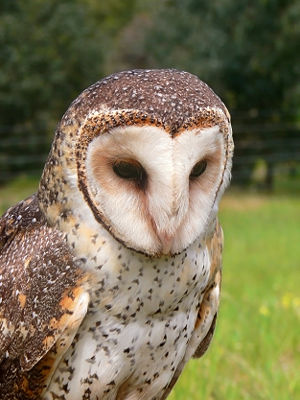Barn-owls (family Tytonidae) are one of the two families of owls, the other being the true owls, Strigidae. They are medium to large sized owls with large heads and characteristic heart-shaped faces. They have long, strong legs with powerful talons. They also differ from Strigidae in structural details relating in particular to the sternum and feet.The barn owls comprise two extant sub-families: the Tytoninae or Tyto owls (including the Common Barn Owl) and the Phodilinae or bay-owls. The Sibley-Ahlquist taxonomy unites the Caprimulgiformes with the owl order; here, the barn-owls are a subfamily Tytoninae. This is unsupported by more recent research (see Cypselomorphae), but the relationships of the owls in general are still unresolved.The barn owls are a wide ranging family, although they are absent from northern North America, Saharan Africa and large areas of Asia. They live in a wide range of habitats from deserts to forests, and from temperate latitudes to the tropics. The majority of the 16 living species of barn owls are poorly known. Some, like the Red Owl, have barely been seen or studied since their discovery, in contrast to the Common Barn Owl, which is one of the best known owl species in the world. However, some sub-species of the Common Barn Owl possibly deserve to be a separate species, but are very poorly known.Five species of barn-owl are threatened, and some island species have gone extinct during the Holocene or earlier (e.g. Tyto pollens, known from the fossil record of Andros Island in the Bahamas, and possibly the basis for the Chickcharnie). The barn-owls are mostly nocturnal, and generally non-migratory, living in pairs or singly.

Synonym
Tytoninae (sensu Sibley & Ahlquist)



Comment
0